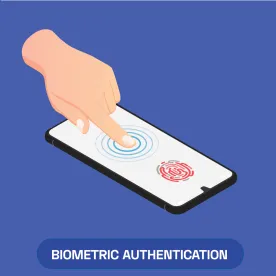New York and New Jersey release “COVID Alert NY” and “COVID Alert NJ,” apps designed to alert their users when they have been exposed to someone who tested positive for COVID-19. These apps follow those released in Pennsylvania and Delaware and are soon to be joined by Connecticut. The states hope to enhance their contact tracing efforts, but what about privacy?
According to New Jersey Governor Murphy,
The app is free and secure, and your identity, personally identifying information, and location will never be collected. The more phones that have the app, the better we can fight this pandemic.
Larry Schwartz, a former high-ranking aid to Governor Cuomo, explains privacy is achieved “not through location services tied to smartphones but through the device’s Bluetooth proximity detection.” More specifically, the apps use the Exposure Notification System technology developed by Google and Apple. By using Bluetooth instead of GPS, location tracking of individuals is not necessary and users can turn it off at any time.
According to state officials, the COVID Alert apps will notify users if they have been in “close contact” (within six feet for at least 10 minutes) with someone who has tested positive for COVID-19. In order for the apps to work between users in close contact, a few things have to happen.
 First, both users must have downloaded the app on their mobile devices and opted-in to receive “Exposure Notifications.” For COVID Alert NY and NJ, the apps are free and available to anyone 18 or older who lives, works, or attends college in New York or New Jersey, and can be downloaded in multiple languages from the Google Play Store or Apple App Store. As with all apps, users should read the app’s privacy statement – here is New Jersey’s privacy statement.
First, both users must have downloaded the app on their mobile devices and opted-in to receive “Exposure Notifications.” For COVID Alert NY and NJ, the apps are free and available to anyone 18 or older who lives, works, or attends college in New York or New Jersey, and can be downloaded in multiple languages from the Google Play Store or Apple App Store. As with all apps, users should read the app’s privacy statement – here is New Jersey’s privacy statement.
Second, one of the users would need to have tested positive for COVID-19 and cooperated with the local health department by agreeing to anonymously enter a code into the user’s app.
Third, when the two users are in close contact, as described above, their devices will exchange codes via Bluetooth. Using Bluetooth Low Energy technology, a device can detect when another phone with the same app is within six feet. If a code matches with a list of codes associated with positive COVID-19 app users, the user will get an “Exposure Alert” together with recommendations on next steps to stay safe and prevent community spread like self-quarantining and getting tested.
With reports of data breaches and intrusive government surveillance of citizens, it is no wonder New York and New Jersey state officials are touting COVID Alert’s attention to privacy. However, app users are permitted to do a “COVID Check-In” and enter any symptoms they are having. As I write this post, there were 15,561 check-ins today, with 97% percent feeling good. When Checking-In, users are reminded that the app does not reveal the user’s identity, but the information, which could include race, gender, and ethnicity, can be useful for public health action. Users also are reminded that a record is kept of symptoms entered into the app for future reference.
According to reports, the app cost $700,000 to develop, a cost reportedly paid for by the Bloomberg Foundation. It remains to be seen whether the app will serve its intended purpose and will keep user data private and secure.




 />i
/>i
